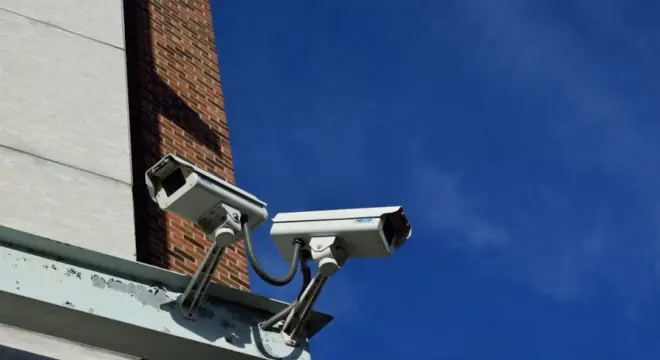7 Proven Garage Security Tips Burglars Don’t Want You to Know
It usually starts with a mess. A few tools scattered. A bike or two. Boxes piling up. But over time, your garage turns into a mini storage unit packed with high-value stuff. And for a burglar? That’s gold.
Here’s the part most people miss: the garage is often the easiest way into your home. It’s less visible, less secure, and rarely upgraded with any real protection. You might have the best alarm system on your front door—but if your garage is wide open (literally or otherwise), it won’t matter.
I’ve seen too many smart people ignore this risk. Until they come home to find the door pried open. Or the remote stolen from the car. Or worse—find nothing gone, but everything touched.
This guide is here to help you change that. Not with fear. But with smart, proven fixes that actually work.
Let’s walk through the steps to protect your garage like it matters—because it absolutely does.
Why Your Garage Is the Weakest Link (And Why Burglars Know It)
I’ve worked with enough homeowners to know this: most people focus on front doors and security cameras—but completely forget the garage. That’s exactly why burglars target it.

Your garage isn’t just a place to park the car. It usually holds expensive tools, bikes, outdoor gear—and often, a direct path into your home. If it’s an attached garage, it gives intruders cover and time to work without being seen.
Burglars know this. According to recent stats, about 9 percent of home break-ins happen through the garage. And it’s not because they’re picking high-tech locks. It’s usually because someone left the side door unlocked, the remote in the car, or the manual release cord dangling.
The bigger issue? Garages are built for convenience, not defense. They’re dark, isolated, and often left out of the security upgrade plan.
If you’ve ever thought, “It’s just the garage—who’s going to bother with that?”, you’ve already given someone an easy way in.
That’s why we’re starting here. Before we get into the smart upgrades, take a minute to think like a thief. If someone stood outside your garage right now, how easy would it be for them to get inside?
Let’s fix that.
Why Your Garage Is the Weakest Link (And Why Burglars Know It)
I’ve worked with enough homeowners to know this: most people focus on front doors and security cameras—but completely forget the garage. That’s exactly why burglars target it.
Your garage isn’t just a place to park the car. It usually holds expensive tools, bikes, outdoor gear—and often, a direct path into your home. If it’s an attached garage, it gives intruders cover and time to work without being seen.
Burglars know this. According to a study by Reolink, around 9 percent of home break-ins happen through the garage or basement. And it’s not because thieves are picking smart locks or using sophisticated gear. It’s usually something simple—like a cracked side door, a forgotten remote in the car, or an old lock that no one bothered to replace.
The other issue? Most garages are designed for convenience, not security. They’re dark, often hidden from the street, and rarely included in home security upgrades. Even people with full surveillance setups tend to skip garage doors, especially side and interior access doors.
And burglars love low-effort entries.
So here’s the hard truth: if you’ve got a nice security system on your front door and nothing but a weak lock on your garage, you’re not as safe as you think.
Let’s change that.
Understand the Burglar’s Mindset and Entry Methods
Let’s get clear on one thing: burglars don’t pick your house at random. They look for soft targets. The kind of place that looks easy to enter, quick to get in and out of, and low risk of getting caught.
Garages check all three boxes.
They’re often dark, partially hidden, and not well monitored. Most don’t have cameras pointing at them. And even fewer have reinforced locks. From a thief’s point of view, that’s an invitation.
So how do they actually break in?
One common method is “fishing” the manual release cord. All they need is a coat hanger and a few seconds through the top of the garage door. If you’ve got one of those red cords hanging from the opener rail, it can be a major vulnerability.
Others simply punch a hole near the handle, then reach in to manually unlock it. It sounds crude, but it works. And it doesn’t take more than a minute.
Side doors are another weak point. These are often hollow-core doors with basic locks—easy to kick in or pry open quietly.
And don’t forget about garage door remotes left inside cars. Thieves target unlocked vehicles parked in driveways or on the street. If they find your remote and your address in the glove box, they’re inside your house before you even know your car’s been touched.
You might think this sounds paranoid—but it’s not. In one Reddit thread, a homeowner shared how thieves failed to get into his garage only because he had removed the manual pull cord. They tried for 15 minutes and gave up. That’s how small changes can stop a break-in.
The key takeaway? You can’t protect what you don’t understand. And you can’t outsmart a break-in if you don’t know how it’s likely to happen.
1. Reinforce Physical Locks and Tracks
Most garage break-ins don’t involve high-tech tools. They happen because the basic hardware is too easy to bypass. So if you haven’t upgraded your garage door’s physical security, that’s the first place to start.
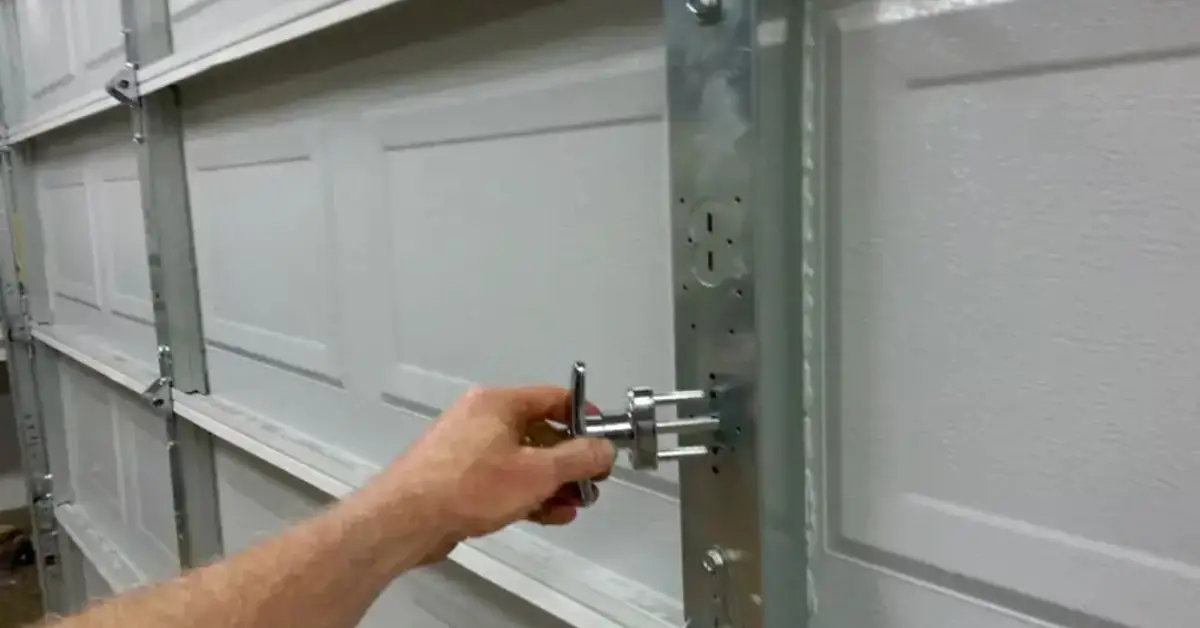
Add a manual deadbolt or sliding bar lock
This is one of the simplest and most effective ways to secure your garage door from the inside. A steel sliding bolt or heavy-duty lock that anchors the door to the track makes it nearly impossible to force open from the outside. This alone can stop a “fishing” attack dead in its tracks.
If you want convenience, go for an automatic deadbolt system that activates when the door closes. Some smart garage systems now include this as a feature, but even a manual version adds major protection.
Reinforce the side entry or service door
This is where most people get it wrong. If your garage has a side door, and it’s a hollow-core door with a standard knob lock, that’s a major risk. Replace it with a solid-core or steel door, and install a proper deadbolt—preferably a Grade 1 or Grade 2 lock rated for exterior use.
Also add hinge reinforcements and long screws into the door frame. A lot of break-ins happen because the hinges pop right out after a few hard kicks.
Secure the tracks themselves
Another overlooked spot is the garage door tracks. If they’re bent, misaligned, or worn down, that’s a vulnerability. Use track shields or anti-pry brackets to stop someone from using tools to pop the door off its tracks.
Real homeowners have shared how simple fixes like inserting a bolt through the track hole stopped multiple break-in attempts. And it’s cheap—less than $10 and takes five minutes to install.
Don’t ignore the manual release cord
You don’t have to remove it completely, but at the very least, secure it with a zip tie or install a garage shield. This keeps burglars from reaching in and disengaging the door from outside. It’s a small detail—but the kind that can make or break your home’s security.
The goal here isn’t just to “lock the door.” It’s to make it physically frustrating, loud, and time-consuming to break in. That alone is enough to make most burglars move on.
Next up: smart tech upgrades that turn your garage into a monitored zone—without spending a fortune.
2. Smart Tech: Cameras, Alarms, and Lighting That Actually Work
Once you’ve locked down the physical points of entry, the next move is making sure someone’s watching. That’s where smart tech steps in—not as a gimmick, but as a real deterrent.
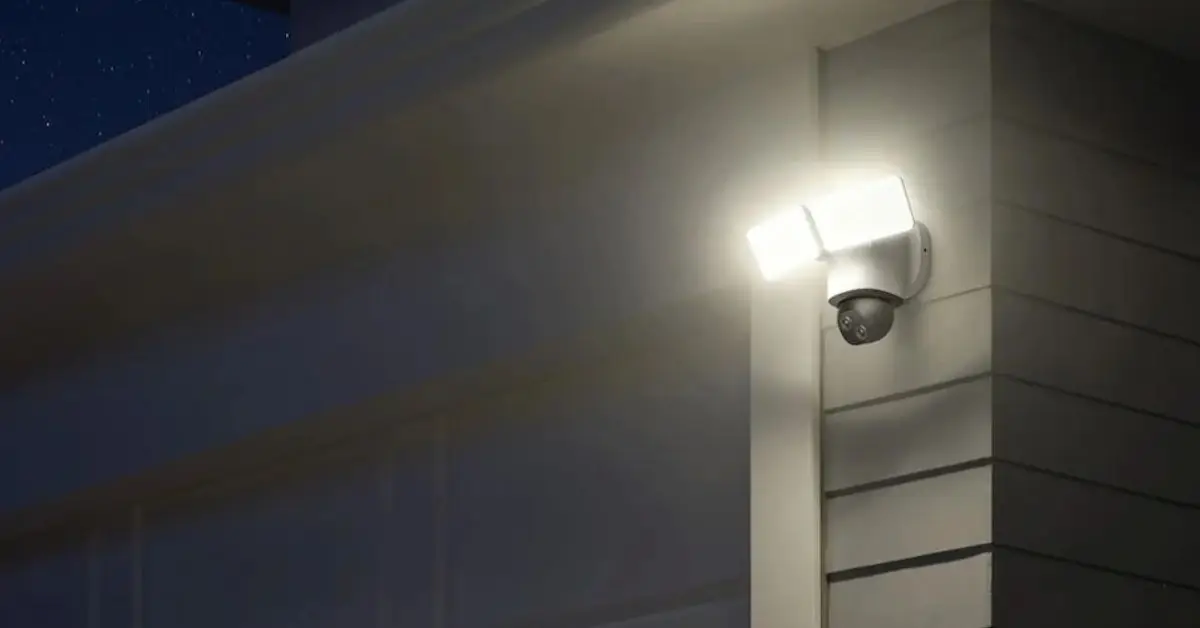
Start with a visible security camera
Position a camera above your garage door or side entrance. It doesn’t just record footage—it makes intruders think twice. A lot of break-ins are crimes of opportunity. If a burglar sees a camera with a red recording light or a motion alert sign, chances are they’ll skip your house altogether.
Look for models that offer motion detection, night vision, and cloud storage. If it connects to your phone, even better—you’ll know the moment someone’s near your garage. Thinking about adding smart surveillance? Here’s what I wish I knew before setting up Frigate for home security—especially if you’re considering a DIY system.
Add motion-sensor floodlights
These are cheap, effective, and instantly change the mood outside your garage. Most thieves prefer the cover of darkness. A bright floodlight kicking on when someone walks up? That’s often enough to send them walking.
Place them above garage doors, near side paths, or around detached garages. Even solar-powered models work well if wiring is a challenge.
Use smart garage door openers with alerts
If you’ve ever left your garage door open by mistake, you’re not alone. Smart openers solve that. They let you check from your phone whether the door is shut—and close it remotely if it’s not.
Some even alert you when the door is opened at unusual times. That alone can buy you precious minutes if something’s wrong.
Don’t forget a loud internal alarm
Burglars hate attention. A cheap garage motion alarm that blasts a siren when someone enters can make all the difference. Even if they manage to get in, a loud alarm inside the garage throws off their plan and forces them to rush.
And that’s the key—slow them down, draw attention, and make the break-in noisy. The longer and louder it gets, the more likely they’ll give up.
Smart gear doesn’t have to be expensive. You can start with a basic camera and light combo for under $100. It’s less about how “fancy” your system is, and more about how clearly you show: this place is being watched. Just make sure you’re also staying alert for AI-powered scams targeting homeowners—smart security shouldn’t open the door to digital risks.
Coming up next: small daily habits that make a huge difference—without spending a rupee.
3. Smart Habits That Protect You Without Spending a Rupee
Sometimes the best security upgrade isn’t a gadget—it’s just paying attention. Burglars don’t always break in with force. A lot of times, they walk in through something you left open, unlocked, or unguarded.
Never leave the garage remote inside your car
This one’s easy to overlook. You park in the driveway or on the street, leave your garage remote on the visor or console, and go inside. But if someone breaks into your car—and they often do—they now have direct access to your home.
Get in the habit of taking the remote inside with you. Or better yet, replace it with a keychain remote or a smart app that controls your garage door from your phone.
Lock the door between your garage and home
Most people think, “If my garage is closed, I don’t need to lock that door.” That’s a mistake.
If someone does get into your garage—by force or by stealth—and the door into your house is unlocked, you’ve just handed them the rest of your home.
Treat that interior door like any other external entry. Install a good deadbolt, and make locking it part of your daily routine.
Don’t leave the garage door open—even for a few minutes
You step out to mow the lawn, check the mail, or talk to a neighbor. Meanwhile, your garage is wide open. And anyone walking or driving by can now see exactly what you store inside—tools, bikes, maybe even your layout.
It doesn’t take long for someone to come back later, better prepared.
Make it a rule: if you’re not in the garage, the door stays closed.
Double-check before bed and when leaving home
This sounds obvious, but it’s often skipped. Every night before bed, and every time you leave the house, make it a point to verify that the garage door is fully closed and locked. Smart systems can help, but even a manual check works.
Teach your family the same habits
Your system is only as strong as the people using it. Make sure kids, partners, or anyone else living with you follows the same habits. It only takes one person forgetting to close or lock up to undo all your effort.
Security isn’t just what you buy. It’s what you do.
Next up, let’s look at how to physically strengthen the garage itself—starting with the door most burglars aim for.
4. Toughen the Garage Door Itself
You can have cameras, alarms, and smart locks—but if your garage door is thin, damaged, or easy to pry open, you’re still vulnerable. This is the door that stands between your stuff and the street. It needs to hold up under pressure.
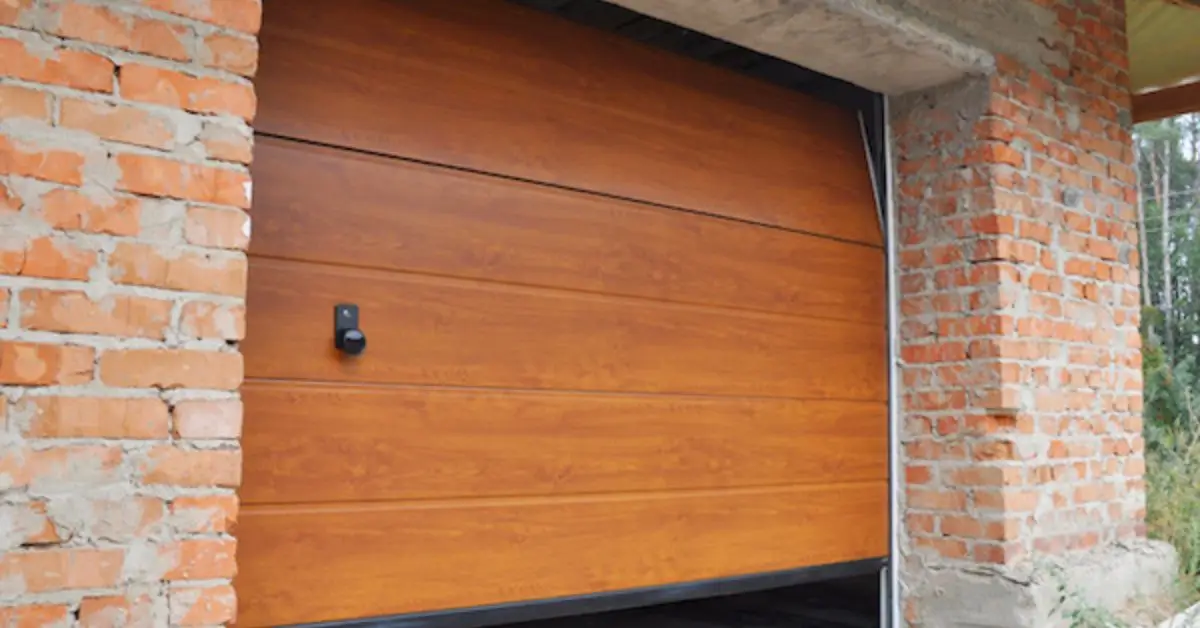
Reinforce the door with interior panels or braces
Most residential garage doors are lightweight. They’re built to lift easily—not to resist someone kicking, punching, or prying. That’s fine for normal use, but terrible for break-ins.
You can add a reinforcement kit or install steel panels inside your existing door. These kits attach to each section of the door and give it added strength against force. If someone tries to cave in the panels, they’ll have a much harder time.
Secure or shield the emergency release cord
Remember that red cord that hangs from the opener rail? It’s meant to release the door in case of a power outage—but burglars know how to use it against you.
They slide a wire hanger or hook through the top of the door, grab the cord, and pop the door open in seconds.
The fix: either shorten and zip-tie the cord out of reach or install a garage shield—a small plastic cover that blocks access from above. It costs less than a pizza and completely eliminates this attack method.
Inspect and reinforce the door track system
If your tracks are loose, bent, or rusted, it makes it easier for someone to manipulate the door off its rails. Use longer screws to anchor the brackets into the studs, and consider adding track shields or anti-pry bars that prevent tampering.
This might not be something you notice day to day—but for someone trying to force entry, it’s a shortcut.
Fix gaps and install a bottom bar or floor bolt
If there’s daylight under your garage door, that’s not just an insulation problem—it’s a security risk. Burglars can wedge tools under the bottom and try to lever the door up.
Adding a floor bolt or locking bar on the inside can block this entirely. It’s a simple mechanical fix that gives you an extra layer of defense.
Don’t wait for damage to get worse
If your door is already cracked, warped, or the locking mechanism is loose—replace it. Burglars don’t need high-level skills to exploit physical weakness. All they need is time and quiet.
And remember: the stronger the door, the louder the break-in attempt. That alone is a major deterrent.
Next, we’ll look beyond the garage itself—at your yard, visibility, and the space around your home that burglars use to hide in plain sight.
5. Landscape and Visibility Management
Security doesn’t stop at the garage walls. Sometimes, the way your property is set up actually helps a burglar—not by design, but by accident.
Tall hedges, unlit corners, overgrown trees—these all offer cover. They give intruders the time and privacy to mess with your garage door without being seen. And most homeowners don’t think twice about it.
Trim back bushes and trees near garage access points
If someone can crouch behind a hedge or tree line and stay hidden from the street, your garage is at risk. The less cover they have, the faster they’ll be seen—and the less likely they’ll even try.
Walk outside and look at your garage from the sidewalk. Ask yourself: if someone stood here after dark, how visible would they be?
Add lighting in key blind spots
Burglars avoid lit areas. A few motion-sensor lights—placed around garage corners, side doors, or alleyways—can make a huge difference. You don’t need to light up your entire yard. You just need to eliminate the darkest hiding spots.
Solar-powered lights work well if you don’t want to deal with wiring. The key is consistency: every entry point should feel exposed, not safe.
Avoid placing large objects near the garage
Things like trash bins, stacked furniture, or outdoor storage units can double as climbing aids. If you leave a ladder nearby, you’ve basically handed someone access to your roof—or attic window.
Keep anything that can be climbed on, moved, or used to block visibility away from your garage zone.
Consider simple signage
A “24-hour surveillance” sign or “monitored by security” sticker isn’t a magic solution—but it helps. When combined with good lighting and visibility, it creates the impression that this house is being watched.
And that’s the goal: make your garage feel risky to approach.
Burglars don’t want to take chances. If your home feels exposed, loud, or unpredictable—they’ll move on.
6. Secure Valuables Inside: Cabinets, Locks, and Layered Protection
Let’s say someone does manage to break into your garage. It happens. The door gives in, the side lock fails, or they find a way past your system. The next line of defense? Making it hard for them to take anything valuable.
Because a break-in is bad—but a break-in where they leave empty-handed? That’s a win in comparison.
Use lockable cabinets or tool chests
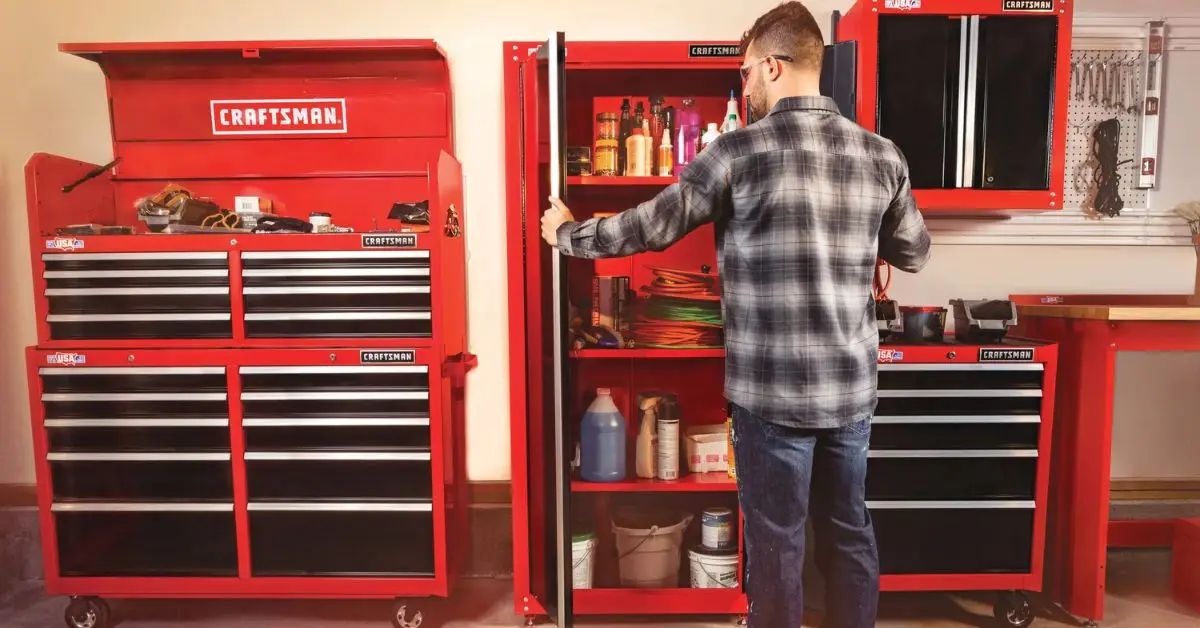
Don’t leave expensive power tools, car parts, or gear sitting out in the open. Invest in a heavy-duty tool chest or wall-mounted storage cabinet that locks. If it’s not easy to grab and go, most burglars won’t waste time trying.
Steel cabinets with internal shelves work well. And if you can anchor them to the wall or floor, even better. Bonus: your garage stays organized.
Chain or lock high-value items like bikes and e-bikes
Bikes are one of the most stolen items during garage break-ins. They’re light, fast to grab, and easy to resell. The simple fix? Chain them to a ground anchor or heavy shelf using a thick U-lock or steel cable.
Store sensitive items elsewhere
Don’t keep house keys, spare car keys, or important documents in your garage. If someone breaks in, they’re not just stealing gear—they could gain access to your entire life.
If you must store something sensitive in the garage, lock it in a bolted-down safe. But ideally, those items should stay inside your home, not in a storage zone.
Cover windows or use frosted film
If your garage has windows, don’t give people a free preview of what’s inside. Use frosted film, blackout curtains, or window tints that let in light but block visibility.
This one small change can stop someone from casing your space just by walking by.
Think of this step as internal insurance. You’re not just keeping burglars out—you’re making it harder for them to benefit even if they get in.
7. Layered Security with Neighbours, Insurance, and Routine Checks
Even with the best locks, lights, and smart tech, no system is perfect. That’s why your garage security plan should go beyond just gear. It needs people, routine, and a few backup plans in place.
Stay connected with your neighbors
You don’t need to be best friends, but having someone nearby who notices when something’s off is invaluable. Let trusted neighbors know if you’re going out of town. Ask them to keep an eye out for open garage doors, strange cars, or any movement near your home.
You can do the same for them. It’s simple, free, and surprisingly effective.
Use vacation routines that don’t look like vacations
Burglars often look for signs that no one’s home: mail piling up, no cars in the driveway, lights that never change. Before a trip, pause your newspaper, have someone move your trash bins, and consider parking a car in front of the garage to make it look occupied.
Smart lights on random timers also help. Just one or two changes can make your house seem active—even when it’s not.
Review your home insurance coverage
This is the unsexy part, but it matters. If your garage is broken into, will your policy cover the damage? What about tools, bikes, or other high-value items stored inside?
Call your provider and ask. Some insurers reduce your premium if you’ve installed certain security upgrades. And if something does go wrong, you’ll want to know exactly what’s covered—before you need it.
Do a monthly garage security audit
Walk around your garage every month like you’re a stranger trying to break in. Are the locks solid? Are the lights still working? Is anything visible through windows? Is the emergency release secured?
These checks take five minutes, but they catch things most people don’t notice until it’s too late.
A layered system isn’t just about tech or gear. It’s about habits, people, and planning ahead—so you’re not relying on just one thing to protect everything. If you want to go beyond the garage and improve your entire home’s safety, don’t miss these 9 home security tips every homeowner should know before it’s too late.
What To Do Next: Your 7-Step Garage Security Action Plan
Reading is one thing. Acting is what actually keeps burglars out.
If you want to protect your garage without wasting time or money, here’s a simple step-by-step plan to get started today. No fluff—just what works.
1. Walk around your garage like a burglar
Step outside. Look at your garage from the street. Ask yourself:
- Can someone hide here?
- Can they peek in the windows?
- Is anything valuable visible or easy to grab?
2. Install (or reinforce) core locks and lighting
Before smart tech, make sure your basics are solid.
- Lock the interior door to the house
- Reinforce weak garage panels or tracks
- Add motion lights near all blind spots
3. Hide your emergency release + secure your remote
This is one of the most common entry methods—and easiest to fix.
- Add a garage shield or shorten the release cord
- Take your remote out of the car
- Or replace it with an app-based opener
4. Lock up valuables inside
- Use steel cabinets or bolt-down storage
- Chain bikes or large gear to heavy fixtures
- Cover garage windows completely
5. Build smart daily habits
- Always close the garage—even for short trips
- Lock the interior door, every time
- Do a quick lock/light check before bed
6. Set up layered backup
- Share vacation plans with a trusted neighbor
- Check your insurance coverage for garage contents
- Review camera footage or test smart alerts monthly
7. Schedule a 10-minute audit once a month
Put it on your calendar. No tools needed. Just check what’s locked, what’s visible, and what’s changed.
Garage security isn’t a one-time project. It’s a mix of solid gear, smart habits, and a mindset that says, “Not this house.”
Now you’ve got the tools—and the plan.
What’s the one thing you’ll fix today? Let me know what stood out to you—or share your own tip. You might help someone else avoid a break-in.
Want more smart home security tips like this? Visit Build Like New for practical guides, expert insights, and step-by-step fixes that actually work.
Disclaimer: This article is for informational purposes only. Always consult a licensed professional for security system installation or structural modifications. Build Like New is not liable for actions taken based on this content.

